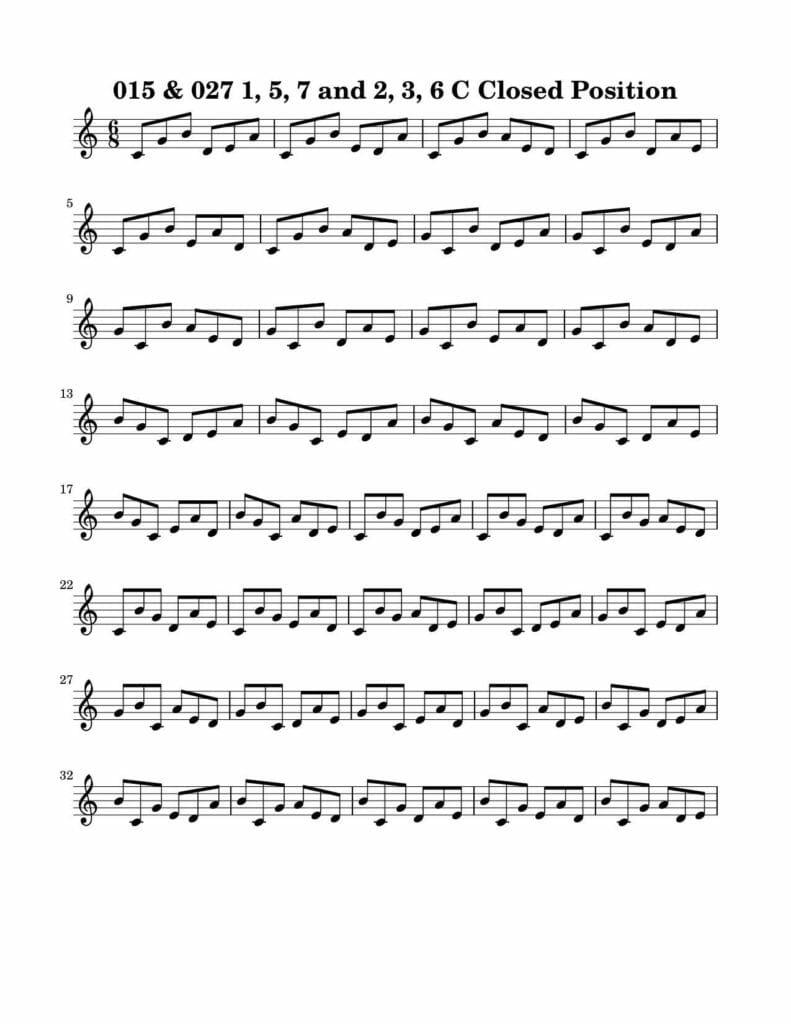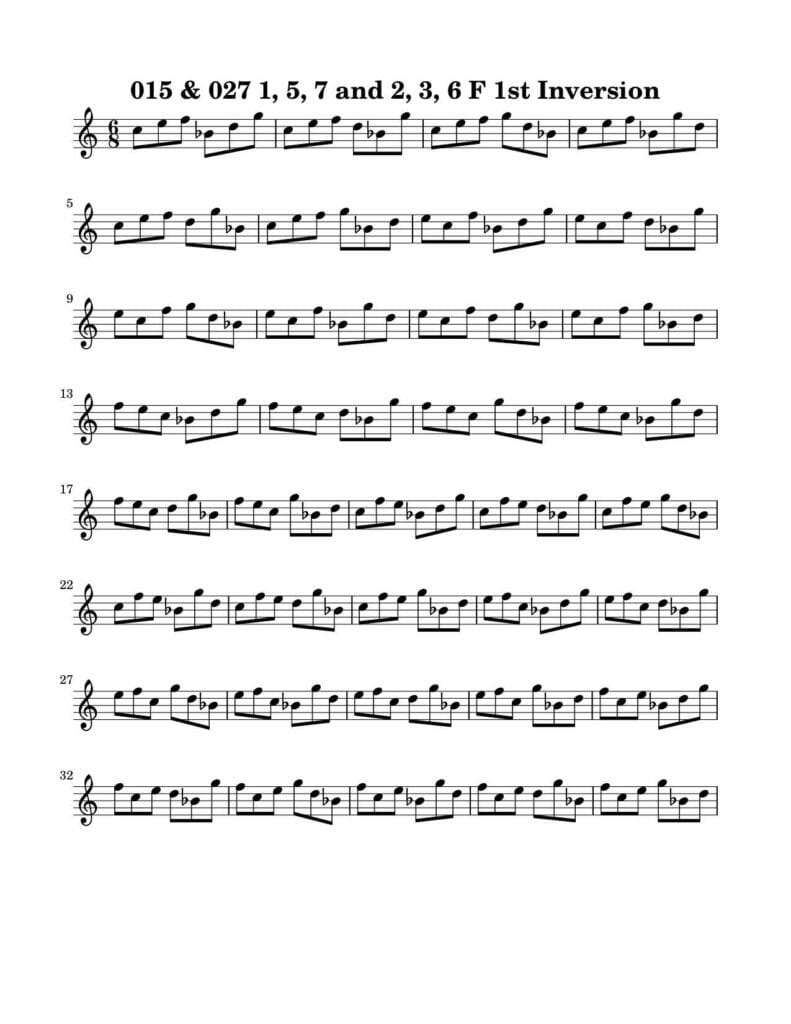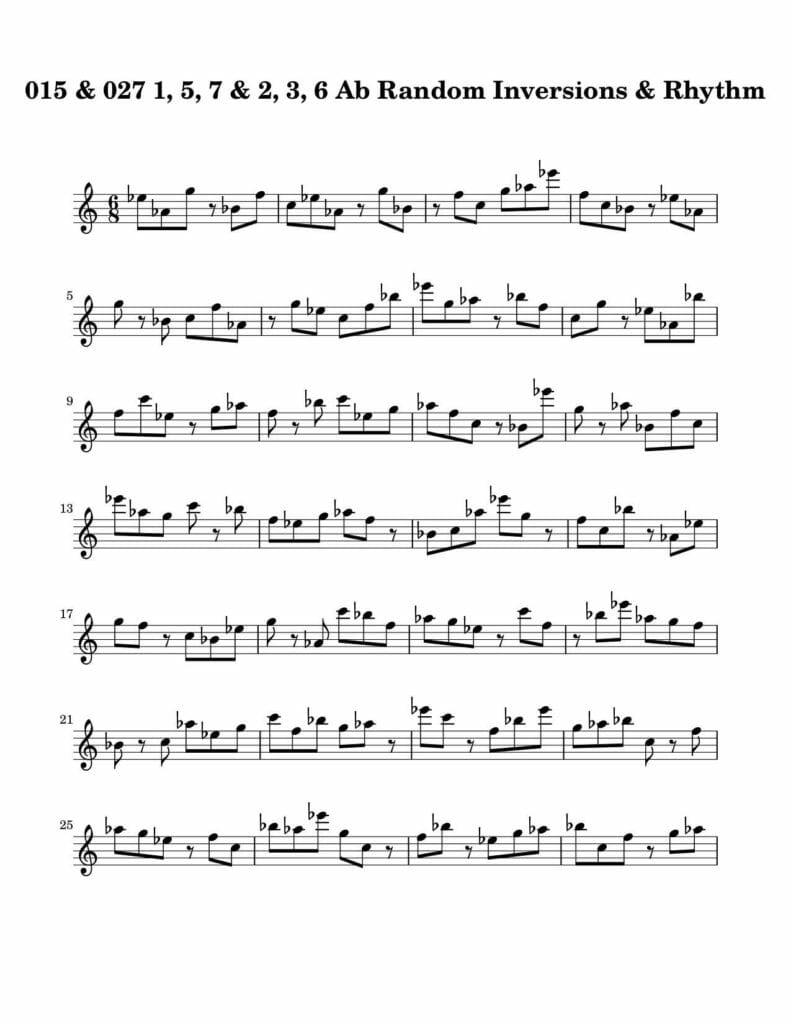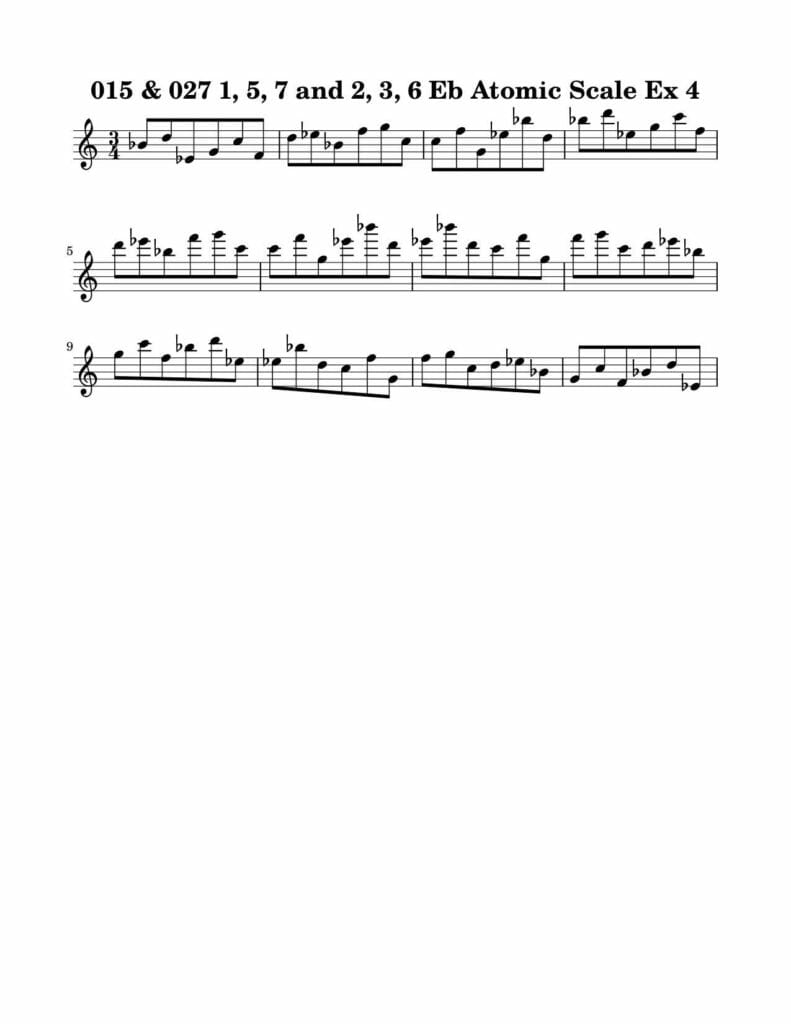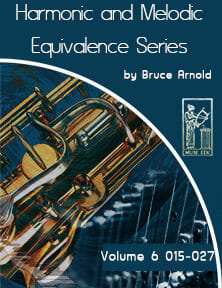
Harmonic and Melodic Equivalence V6
Harmonic and Melodic Equivalence V6
Status: In stock, Digital book is available for immediate access.
Melodic Rotations Learning to Improvise More Based on the Composition
"Harmonic and Melodic Equivalence" is a series of books that will help you to develop many different musical skills simultaneously. The source materials for these books are exercises that contain two 3 note groupings, also called "trichords," that are manipulated in various ways. These exercises use many different types of harmonic and melodic ideas that can be superimposed over common chord progressions, scales and other musical situations. The exercises found in these courses are also great for singing and rhythm studies. Finally, the "Harmonic and Melodic Equivalence" course concentrates on the use of the three note pitch class sets (trichords) by pairing each trichord with another trichord with the same prime form. For instance, in this volume C, G, B and D, E, A which are an 015 and 027 pitch class set. This is a great sequence because it uses six notes that are find in any of the major modes therefore you will find a ton of useful applications which are discussed in the course.
Harmonic and Melodic Equivalence Series
This course is part of the Harmonic and Melodic Equivalence Series which explores over 40 different three note pairs that I've used in compositions and improvisations. To see all volumes follow the link to explore each volume and hear examples from each course as well as finding links to compositions that I've written using each combination.
Harmonic and Melodic Equivalence Exercises
This course is divided up into two sets of exercises written in treble and bass clef. The 1st set of exercises gets gradually harder but also more musical. Depending upon your musical skills you can start anywhere you want but for beginners I would recommend starting from the 1st exercise of the five. The 2nd set of exercises are called "Atomic Scales." These exercises are a technical exercise that really helps you to learn these ideas but also sound great as a melody right off the bat. There are 6 different types of "Atomic Scales" exercises in this course. You don't have to play every exercise in every key. But doing this will greatly increase the likelihood of you using it in real music in the future. Below is a listing of the exercises found in this course:
- Closed position studies.
- 1st inversion studies.
- 2nd inversion studies.
- Random combinations of closed position along with 1st and 2nd inversion.
- Random combinations of closed position along with 1st and 2nd inversion with rhythmic displacement.
- Atomic Scales Exercise 1
- Atomic Scales Exercise 2
- Atomic Scales Exercise 3
- Atomic Scales Exercise 4
- Atomic Scales Exercise 5
- Atomic Scales Exercise 6
Explanation of 2nd Set of Exercises in Harmonic and Melodic Equivalence V6 Course
Below is an explanation for each set of the 6 different atomic scale exercises found in this course. Three octave sequences that move back and forth between the two 3 note groups are presented in six different configurations. These exercises are highly melodic and can be used verbatim as melodies when soloing. If we thought of the three notes as A,B,C then there would be six different ways to combine these notes. i.e. ABC, ACB, BAC, BCA, CAB and CBA. All exercises include MP3s as well as midi files so that you can hear and play these exercises at any tempo as well as versions in all 12 keys.
- Three octave sequences that move back and forth between the two 3 note groups in the ABC sequence
- Three octave sequences that move back and forth between the two 3 note groups in the ACB sequence
- Three octave sequences that move back and forth between the two 3 note groups in the BAC sequence
- Three octave sequences that move back and forth between the two 3 note groups in the BCA sequence
- Three octave sequences that move back and forth between the two 3 note groups in the CAB sequence
- Three octave sequences that move back and forth between the two 3 note groups in the CBA sequence
1st Set of Exercises in Harmonic and Melodic Equivalence V6 Course
Here are a few examples from the 1st set of exercises. A complete list of the different types of exercises can also be found below.
Closed Position Exercise
MP3 example
https://s3.amazonaws.com/media.muse-eek.com/mp3/HandMEV6/01_015_027_Degree_1_2_3_5_6_7_Closed_Position_Key_C.mp3
1st Inversion Exercise
MP3 example
https://s3.amazonaws.com/media.muse-eek.com/mp3/HandMEV6/02_015_027_Degree_1_2_3_5_6_7_1st_Inversion_Key_F.mp3
2nd Inversion Exercise
MP3 example
https://s3.amazonaws.com/media.muse-eek.com/mp3/HandMEV6/03_015_027_Degree_1_2_3_5_6_7_2nd_Inversion_Key_Bb.mp3
Random combinations of closed position along with 1st and 2nd inversion.
MP3 example
https://s3.amazonaws.com/media.muse-eek.com/mp3/HandMEV6/04_015_027_Degree_1_2_3_5_6_7_Random_Inversions_Key_Eb.mp3
Random combinations of closed position along with 1st and 2nd inversion and rhythm permutation
MP3 example
https://s3.amazonaws.com/media.muse-eek.com/mp3/HandMEV6/05_015_027_Degree_1_2_3_5_6_7_Random_Inv_Rhy_Key_Ab.mp3
2nd Set of Exercises in Harmonic and Melodic Equivalence V6 Course
Here are a few examples from the 2nd set of exercises.
Atomic Scales 1st Rotation
MP3 example
https://s3.amazonaws.com/media.muse-eek.com/mp3/HandMEV6/01_015_027_Degree_1_2_3_5_6_7_Atomic_Scale_Ex_1_Key_C.mp3
Atomic Scales 2nd Rotation
MP3 example
https://s3.amazonaws.com/media.muse-eek.com/mp3/HandMEV6/02_015_027_Degree_1_2_3_5_6_7_Atomic_Scale_Ex_2_Key_F.mp3
Atomic Scales 3rd Rotation
MP3 example
https://s3.amazonaws.com/media.muse-eek.com/mp3/HandMEV6/03_015_027_Degree_1_2_3_5_6_7_Atomic_Scale_Ex_3_Key_Bb.mp3
Atomic Scales 4th Rotation
MP3 example
https://s3.amazonaws.com/media.muse-eek.com/mp3/HandMEV6/04_015_027_Degree_1_2_3_5_6_7_Atomic_Scale_Ex_4_Key_Eb.mp3
Atomic Scales 5th Rotation
MP3 example
https://s3.amazonaws.com/media.muse-eek.com/mp3/HandMEV6/05_015_027_Degree_1_2_3_5_6_7_Atomic_Scale_Ex_5_Key_Ab.mp3
Atomic Scales 6th Rotation
MP3 example
https://s3.amazonaws.com/media.muse-eek.com/mp3/HandMEV6/06_015_027_Degree_1_2_3_5_6_7_Atomic_Scale_Ex_6_Key_Db.mp3
TOC in the Harmonic and Melodic Equivalence V6 Course:
- How to Use This Course
- Harmonic/Melodic Possibilities of an 015-027 combination
- Chord Possibilities of an 015-027 combination
- Rotations Starting on Every Eighth Note
- 015-027 combination in Modal Playing
- How to Think of the an 015-027 combinations used in This Course
- 015-027 combination daily exercise-Atomic Scales
- Thinking of the an 015-027 combination as Modes
- Thinking of the an 015-027 combination as One Scale
- C, G, B and D, E, A as One Scale in All Keys
- Additional Practice Ideas
Get Harmonic and Melodic Equivalence V6 Today!
Status: In stock, Digital book is available for immediate access.
Additional Information for Harmonic and Melodic Equivalence V6:
- Digital Edition 978-1-59489-341-4
- One 11 page PDF explaining exercises, 5 different types of exercises, 328 pages of exercises in PDF format in treble and bass clef
- MP3's and Midi files for all exercises.
- 12 MP3s from Tuba MetroDrone®
What people are saying:
This is such a useful book because the 015-027 can replace major and minor chords. Really appreciate you making this available because I can instantly apply it to so many situations. Thanks again!! J. Ogland
I've been struck by this 027-015 combination ever since the release of the Pitch Class Theory Courses last year. I'd highly recommend this volume as well as the Volume 19 series as a place to jump into these great books. A. Leauning
Hi Bruce, I recently picked up Volume 19A and found it very useful for applying triads to various musical situations. This 015-027 it turning out to be another book that is immediately useful for me. Such a beautiful sound that is completely fresh and new. Thanks for sharing this secret combination with us all! H. Helms
WOw this series is really opening up some new melodic and harmonic knowledge for me. Really appreciate the email correspondence and suggestions on how I can use these combinations for melodies and ear training. Y. Oldman



